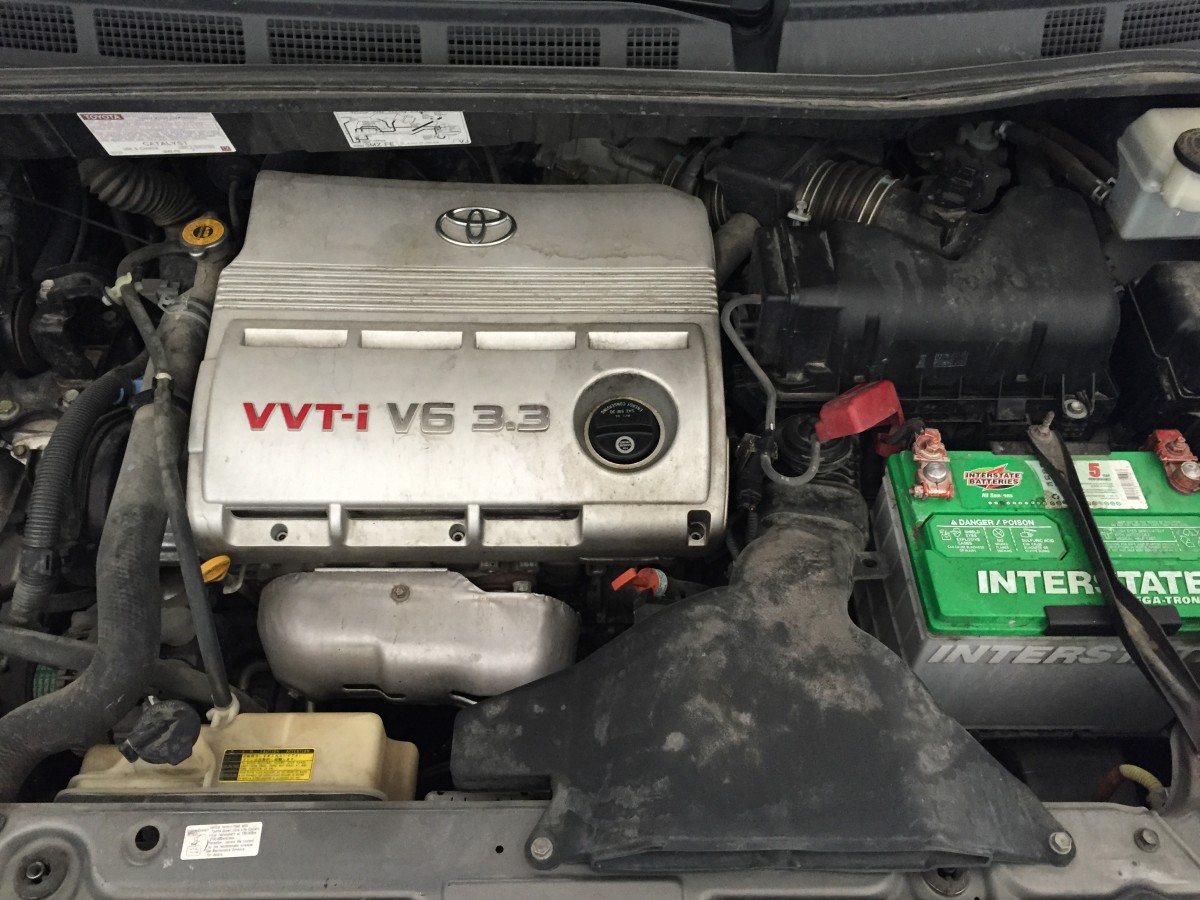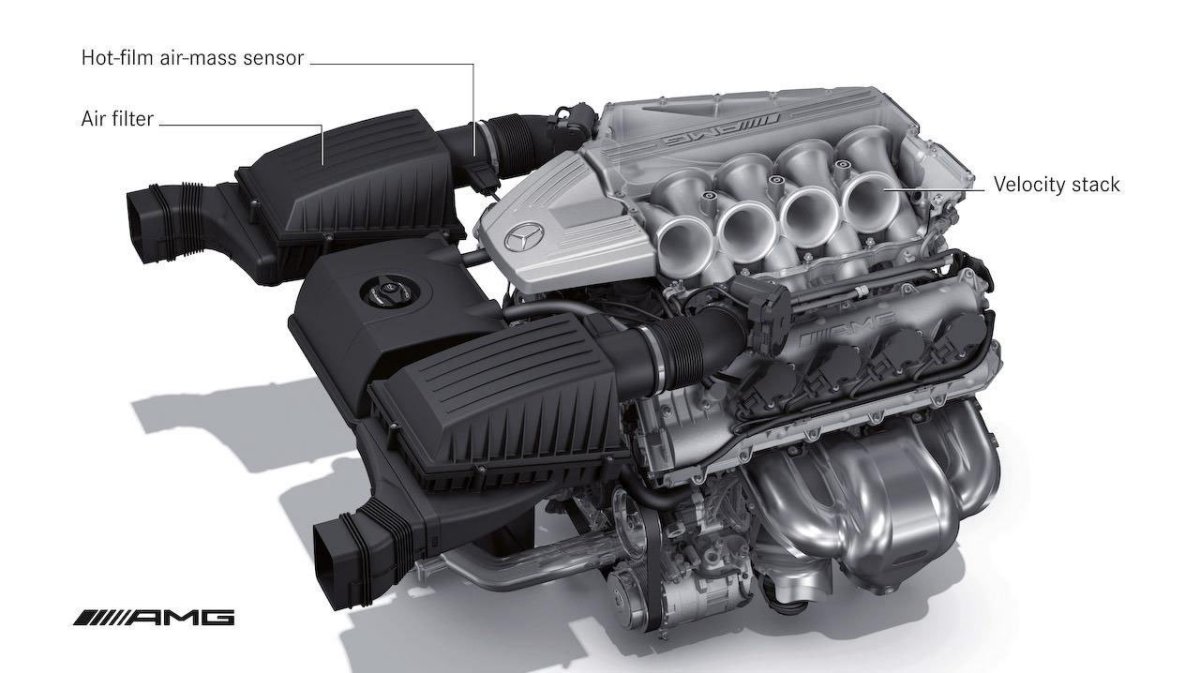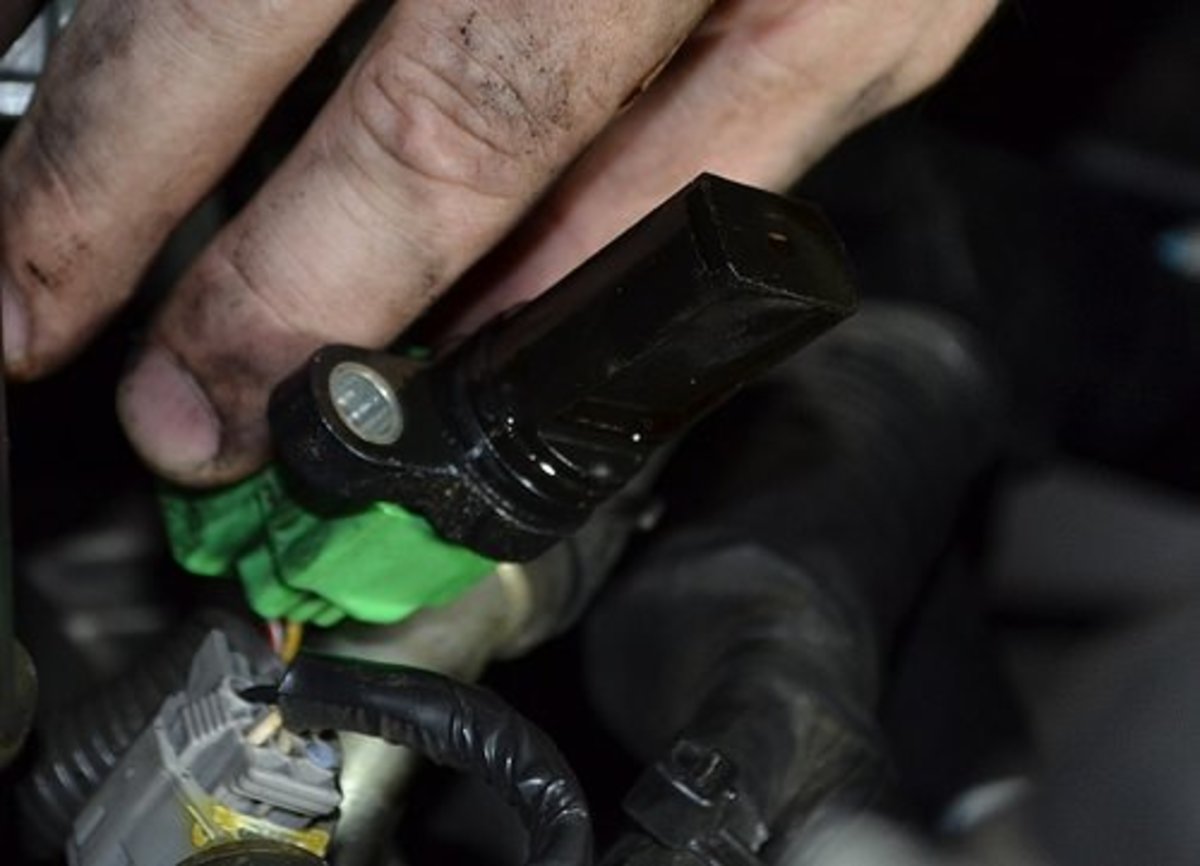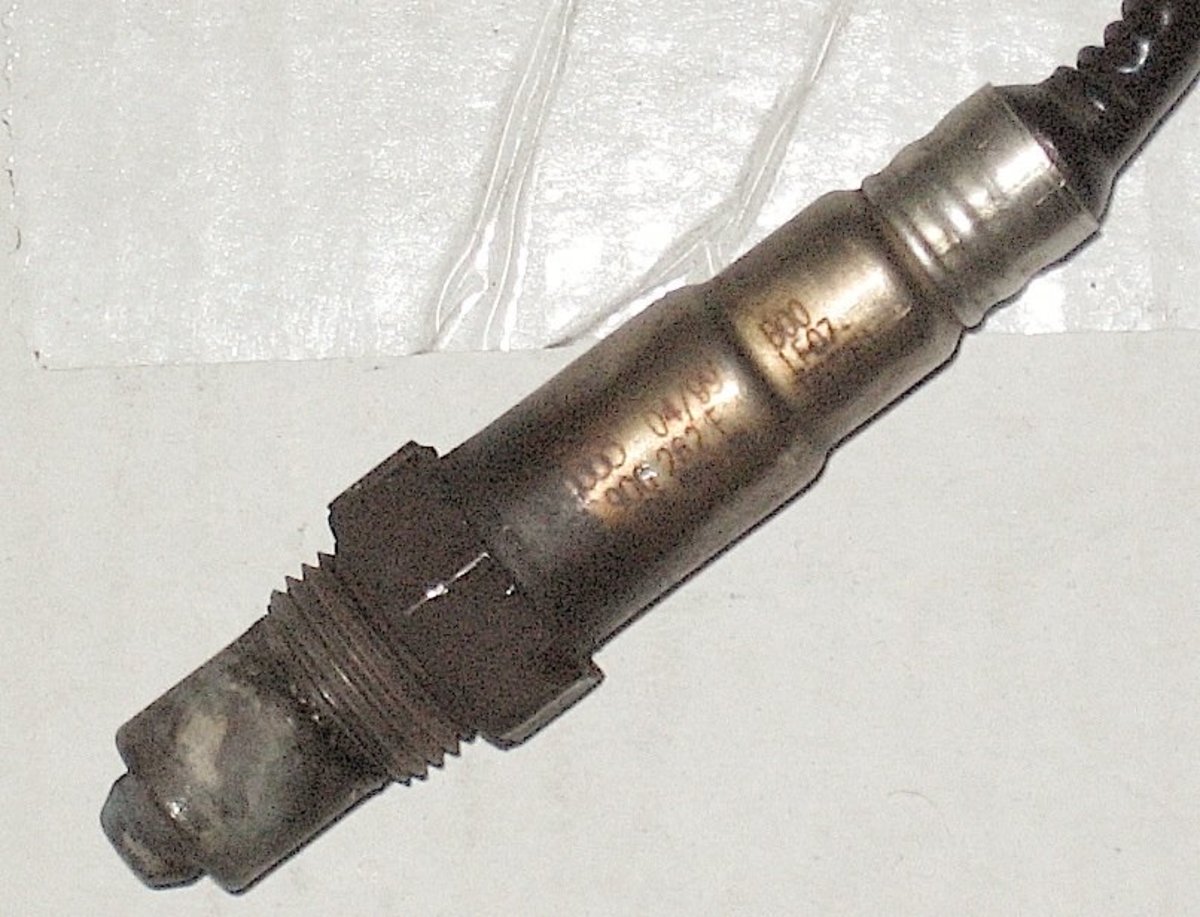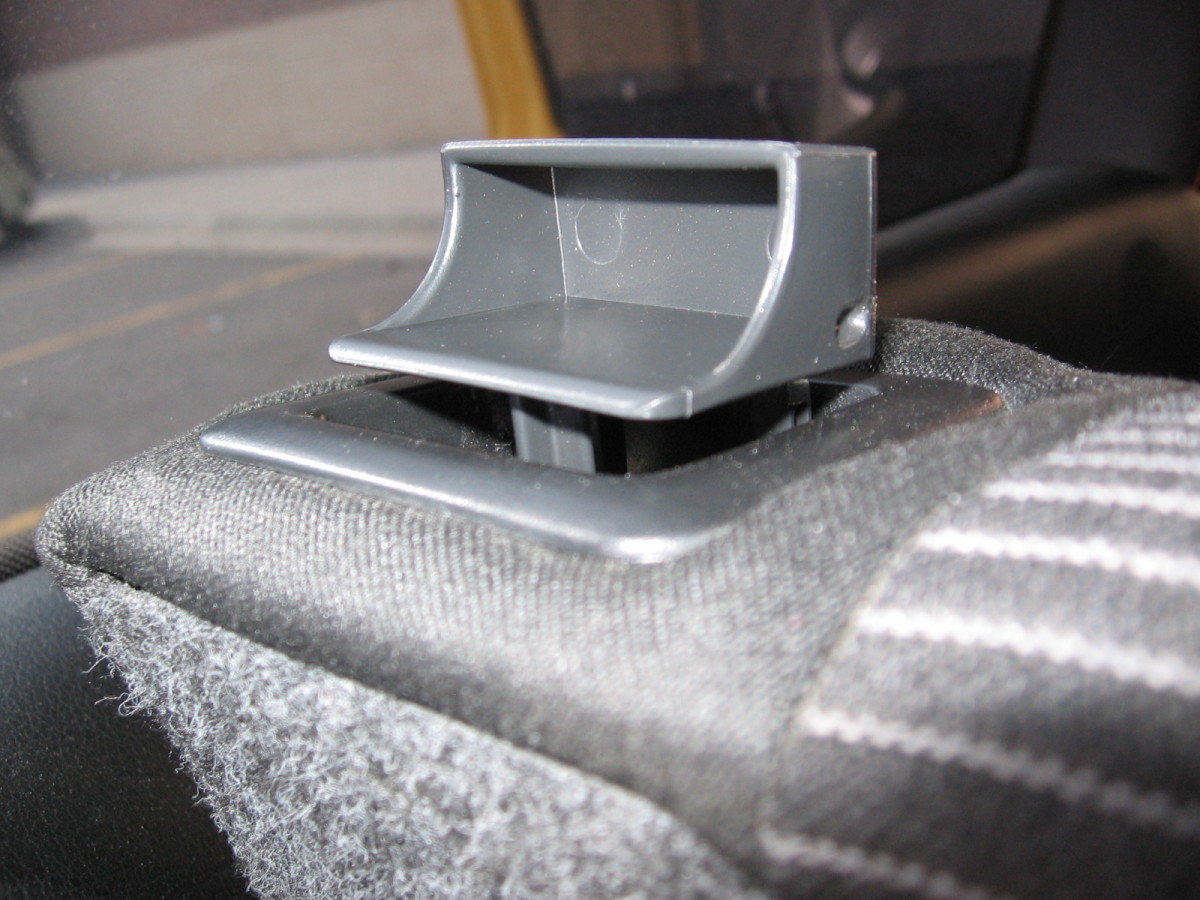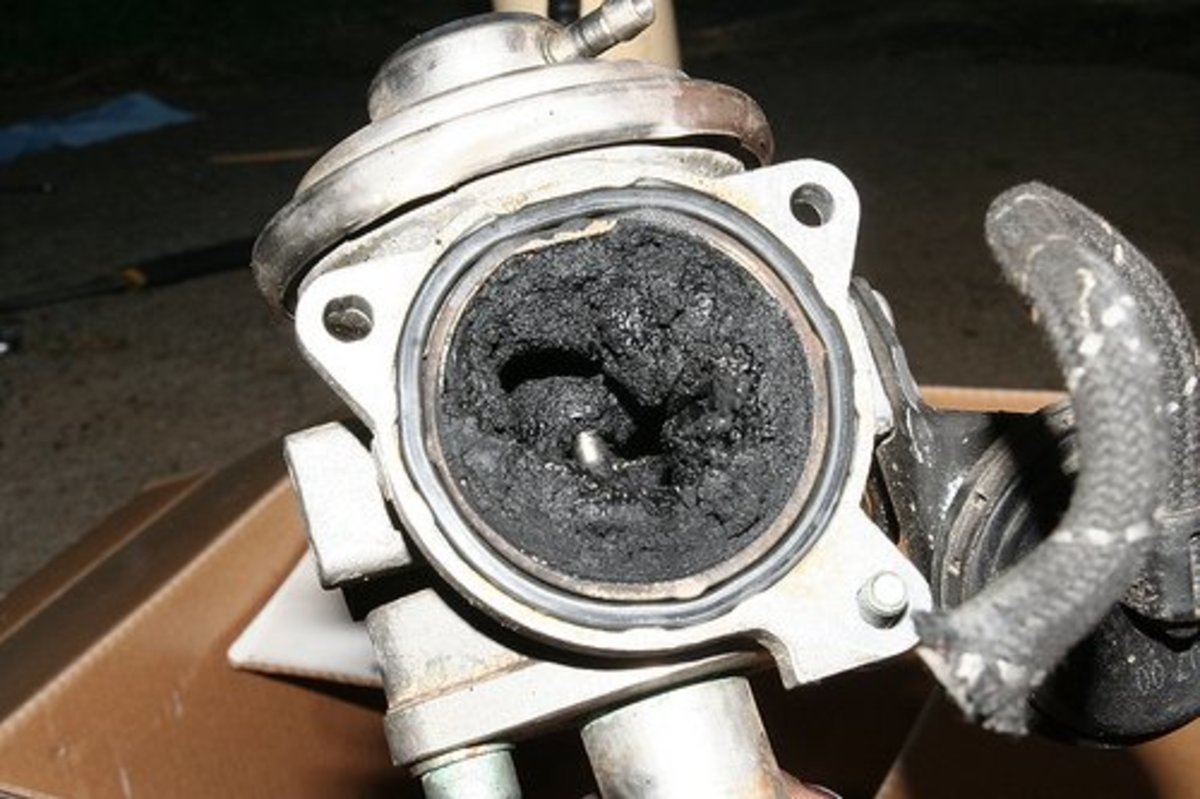Oxygen Sensor - Description, Diagnosis, Replacement
The Oxygen Sensor
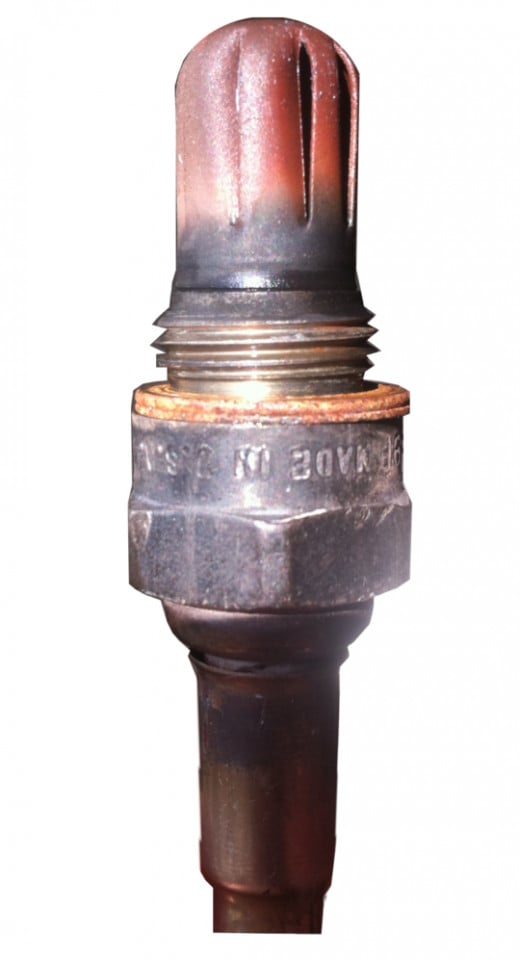
What Is The Oxygen Sensor & What Does It Do?
The oxygen sensor looks similar to a spark plug. It is screwed into the exhaust manifold on most cars and trucks, or occasionally, the exhaust pipe. It monitors the oxygen content in the exhaust and signals the Electronic Control Module to adjust the carburetor for a lean or rich mixture.
In previous hubs it's been helpful to liken engine parts to the human anatomy for understanding the essential job of a component. In the hub Change Your Spark Plugs the spark plug is compared to the beat of your heart and the bounce of a ball. If the spark plug is like the beat is to the heart then the oxygen sensor is comparable to your lungs nervous system. It senses the oxygen content and sends a signal to the brain (ECM); breath faster I need oxygen (the mixture is too lean), or breath slower, I'm gonna pass out (the mixture is too rich). Then the ECM acts on the information received, either enriching or leaning out the mixture in the carburetor. This is the only thing the oxygen sensor does. It is a simple either, or, job. So simple that rarely does an oxygen sensor go bad. All oxygen sensor eventually wear out over a period of years, but they are replaced unnecessarily.
Where is the Oxygen Sensor??
As I mentioned above, the oxygen sensor is screwed into the exhaust manifold or the exhaust pipe. This is the part that takes the exhaust from the engine out the back of your vehicle, via a long pipe. At the beginning of that long pipe, right where it exits the engine you will see the oxygen sensor with a wire coming out of it and going into the ECM. It's pretty easy to spot. On some vehicles, like the 1989 Chevrolet 3500 in the photo's, you can look through the wheel well and see the exhaust manifold with the oxygen sensor screwed into it (refer to the photo's below)..
Oxygen Sensor Location Through Wheel Well
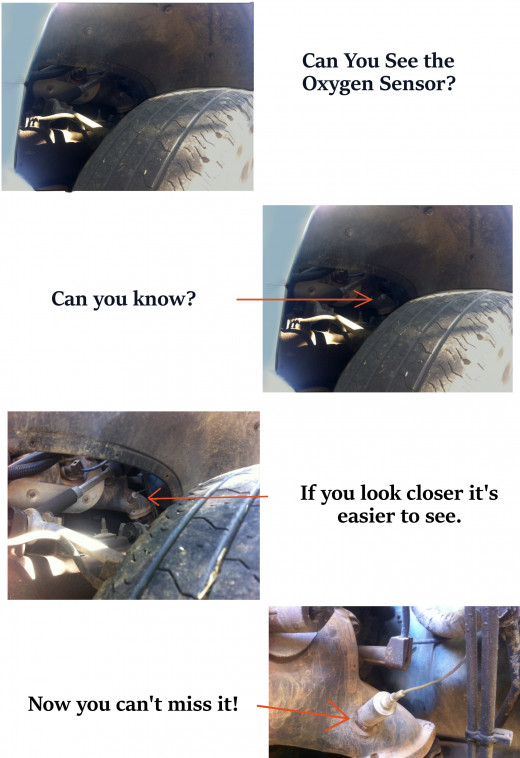

What Are the Symptoms of a Failed Oxygen Sensor?
The following list is a good indicator that your cars oxygen sensor has failed:
- Sudden poor fuel economy.
- Poor performance. IE: stalling, rough idle, poor acceleration. These symptoms are indicators of several different issues in a vehicle, so any one of these is not an absolute diagnosis of an oxygen sensor failing.
- Your vehicle does not pass smog. The smog report will indicate a high or low CO emission which is the oxygen sensors job to monitor. If it's not monitoring the exhaust, then the CO will be out of the acceptable range.
- The check engine, or idiot light, on the console will be lit. The console light will illuminate for several different engine problems and the oxygen sensor is one of them. Use an OBDII code reader to determine which specific part the console light is illuminating for.
Testing the Oxygen Sensor
TEST
| PROCEDURE
| NORMAL READING
|
|---|---|---|
Visual
| Inspect the wires coming out of the probe to the connector. We're looking for broken, damaged or otherwise compromised wire connections.
| If all wires look good move on to next step.
|
Backprobe
| Warm up engine. Then, run at 1200 rpm 2 minutes. Backprobe between between oxygen sensor and battery ground (DC voltage).
| Check manual for your vehicle normal reading. Fast fluctuation between provided number is normal.
|
Bench Test
| Remove probe from vehicle. Set meter to DC and set one test line on probe and the other on ground of probe. Use a torch or other heat source and heat the probe above 600 degrees F.
| Your meter should varied between numbers quickly. Indicating the sensor is working.
|
Easy DIY Oxygen Sensor Test
If your car is exhibiting the symptoms above there is a simple test you can perform at home.
The exhaust in your vehicle is extremely hot, it's the result of an explosion that occurred just seconds prior to the exhaust entering the manifold, so it's hot! As a matter of fact, the ECM doesn't acknowledge information sent from the oxygen sensor until the temperature is at least 600 degrees Fahrenheit!
To test the oxygen sensor you will need:
- The suspected failing oxygen sensor.
- Flashlight for inspecting the wires.
- A torch or source of high heat.
- A multimeter.
- Pliers or similar tool to hold the oxygen sensor while it is heated.
- Maybe a hammer.
- Your particular vehicle manual.
Replacement
If the oxygen sensor is indeed failing it is very easy to replace. Keep in mind that when metal is heated it expands and when it cools it constricts. The exhaust manifold heats up to very high temperatures and then becomes cold as the outside weather. This can cause the oxygen sensor to be potentially difficult to remove. Sometimes if you take a hammer and give the exhaust manifold a couple of taps (strong taps) it will allow the oxygen sensor to break free.
The steps to removing the oxygen sensor:
- Disconnect battery negative cable, just in case.
- Unplug the wires going out of the oxygen sensor. There will be a connector along the wire that you can un-clip. Just follow the wires out of the oxygen sensor at the manifold until you come to the clip.
- Using a wrench (and maybe that hammer) unscrew the oxygen sensor from the exhaust manifold.
- When you have it out you can put the other one in the spot the old one came out of. Check the threads for anti-seize. The manufacturer puts anti-seize on the threads now a days for you. If they didn't be sure to put some on before threading it into the exhaust manifold.
- Re-attach the wire to the clip you unsnapped it from and you're DONE!

